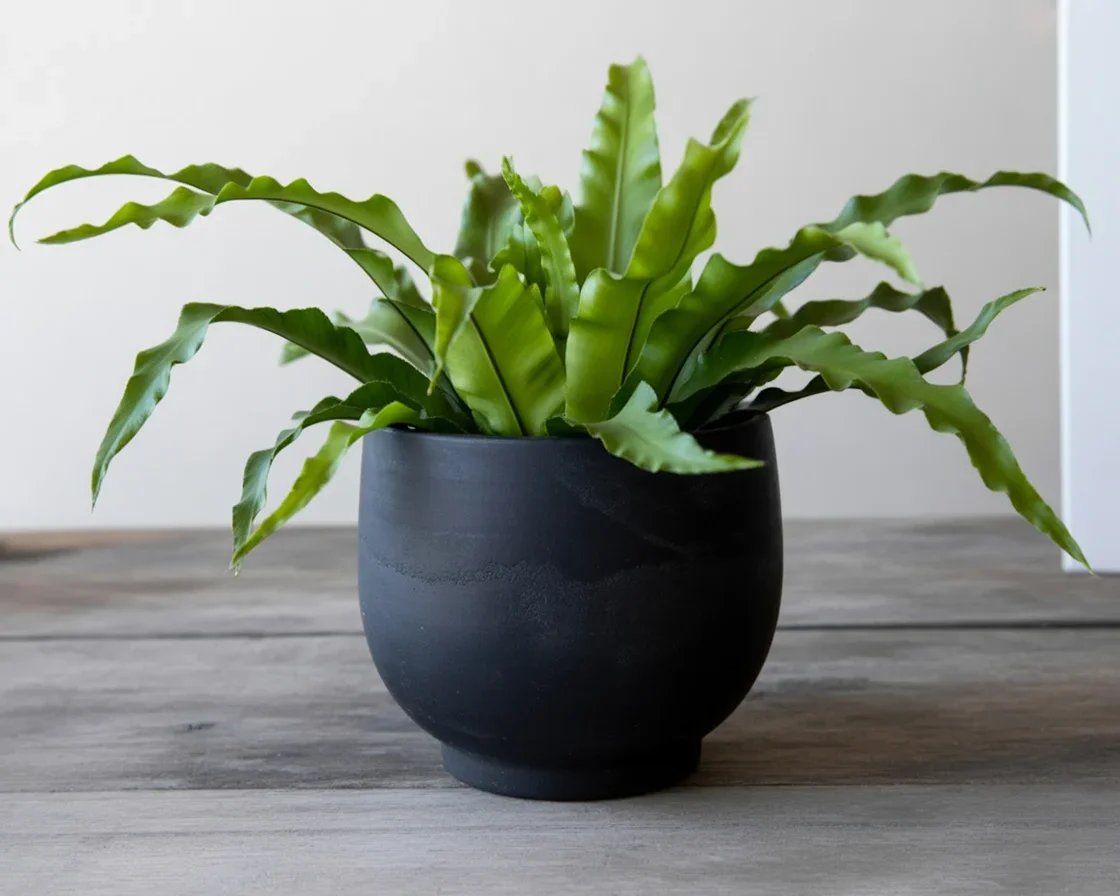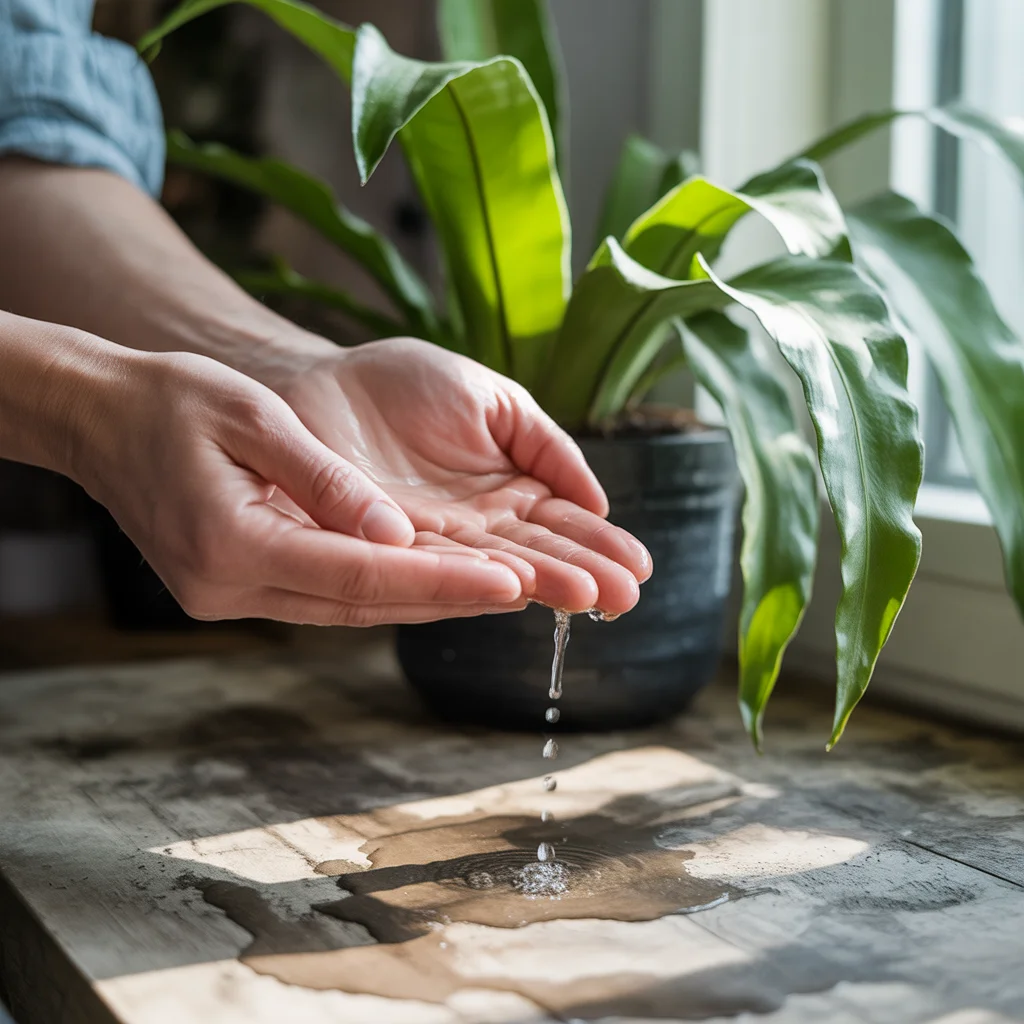BIRD’S NEST FERN Care getting on your nerves lately? Trust me, I’ve been there, peering at yellowing leaves and scratching my head. Sometimes you want a dreamy jungle in your living room, but instead, you get droopy ferns throwing a silent tantrum. If you’re like me and have lost more than one plant before (yep, guilty), you might be looking for a few easy wins. Wait—I learned so much after reading up on Carmen Jane plant care and I also stumbled over the China Doll Plant Care guide which just makes everything feel less scary. Let’s chat about how to make Bird’s Nest Fern actually love your home.
TABLE OF CONTENTS
Bird’s Nest Fern Care
When it comes to Bird’s Nest Fern care, some folks (me, I’m folks) think you can just stick a fern on a table and call it a day. Nope. These green beauties are like finicky house guests who let you know when they’re not happy. Start with bright but indirect sunlight. Direct light fries the leaves, and I mean, crispy. Bathroom windows or kitchens with filtered light—perfect. Humidity? Crank it up. These ferns are fans of misty spaces, almost spa-like. I usually splash a bit of water around the plant when I shower, and somehow, it does seem to perk up.
Okay, let’s talk dirt. They hate soggy soil, but dry as the desert is also a no-go. I’ve sworn by a loose, chunky potting mix with some orchid bark. Water when the top inch feels dry, but don’t let the pot sit in water. Oh, and be gentle with the middle rosette—that’s basically the fern’s heart. Never water straight into it, or eek, rot city.
Types of Bird’s Nest Fern
Now, Bird’s Nest Fern isn’t just one boring plant at all. I was surprised to learn there are so many quirky types! The classic is Asplenium nidus—wavy, lush, and proud. Then you’ve got the Crispy Wave, which looks like it’s got a punk-rock haircut, honestly. For folks who want something a little different, try ‘Victoria’ with frilly, jagged ends or ‘Osaka’ and its crocodile-skin texture (kinda wild, right?).
Each variety is just a twist on the same theme: bold tropical vibes. While the care is basically similar, some rarer types just need a tad more babying, especially on humidity and warm temps. I may or may not have spent way too much on one with curly leaves. Worth it. 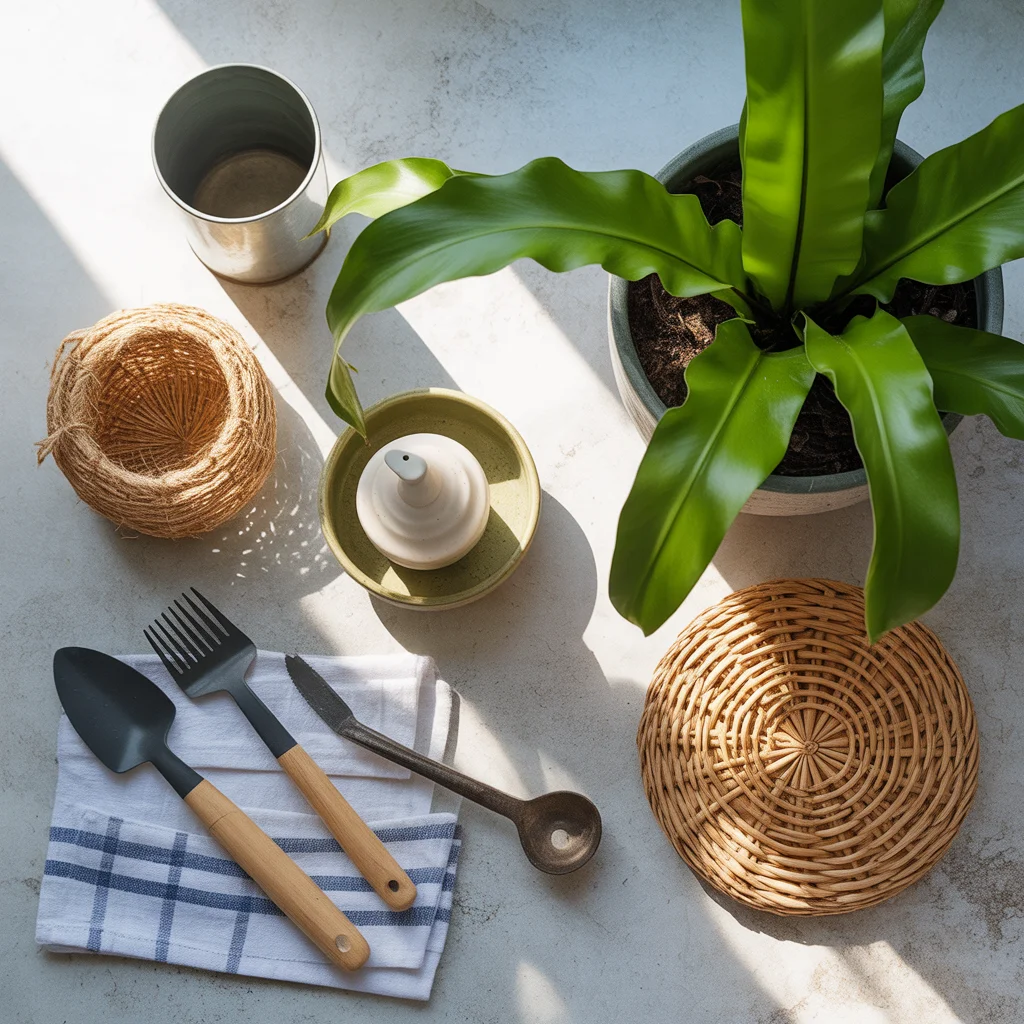
Pruning
Pruning a Bird’s Nest Fern is like giving your plant a pep talk. Seriously, just snip away any sad-looking yellow or brown fronds near the base. Don’t be squeamish—these guys bounce back fast. Never chop in the center because that’s where new growth pops up.
I usually prune every couple of months, or when it looks especially droopy (think: overcooked spaghetti in a bowl). Always use clean shears or scissors, not your fingers—I learned that the hard way with a torn leaf and a grudgey plant. Sometimes, just removing a gnarly leaf is all it takes to make your whole fern feel fancy again. 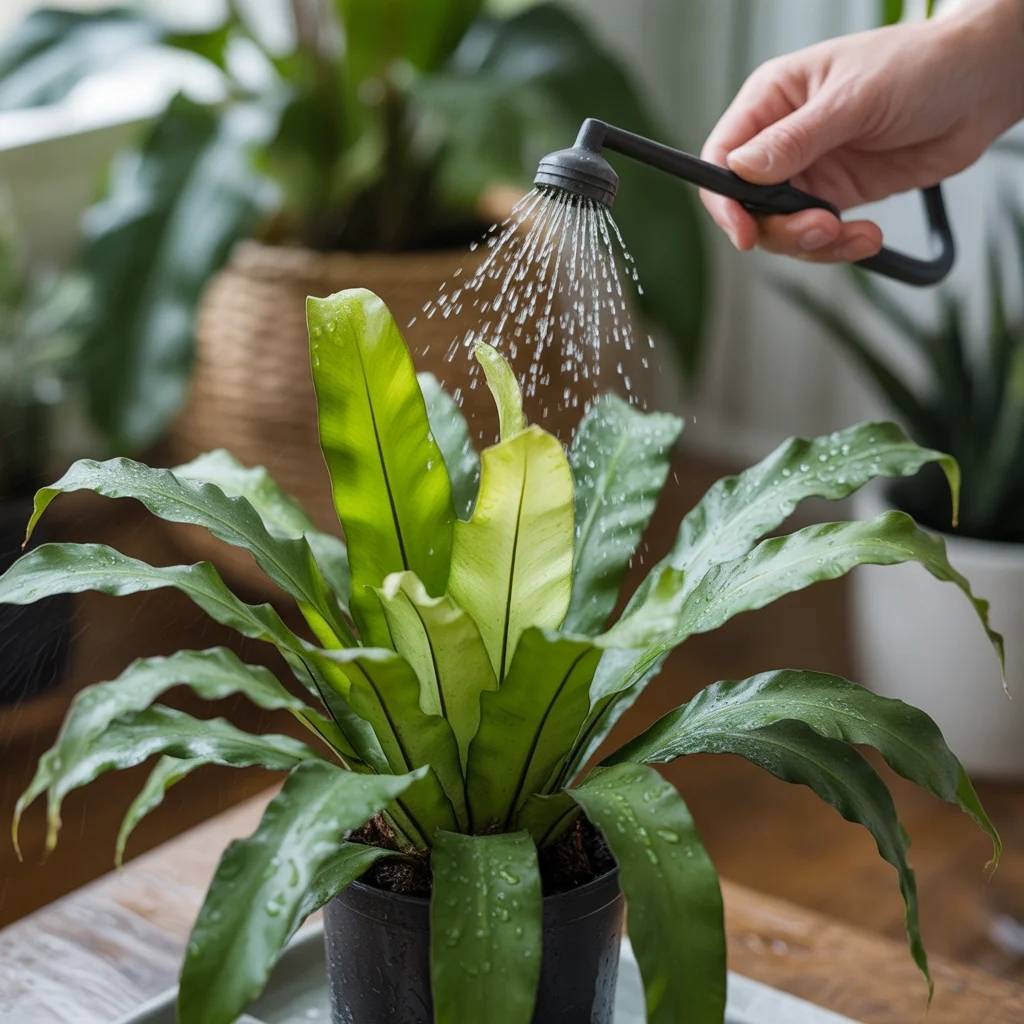
“I followed this pruning trick and my Bird’s Nest Fern went from looking like a haunted house prop to a five-star restaurant centerpiece. I’m never skipping trimming again.”
— Sam, fellow plant nerd
Propagating Bird’s Nest Fern
Let’s get real for a minute: Propagating a Bird’s Nest Fern takes some patience and a touch of luck. Most ferns grow from spores, which is plant talk for tiny dust-like seeds. If you spot brown dots under the leaves, you might have some spores ready.
I once tried spore propagation and, well, it’s definitely not instant noodles. You collect the spores, sprinkle ‘em on moist peat, cover with a clear lid or bag, and wait forever (or like, months). Bright, filtered light helps, and do not let it dry out. If you see green fuzz show up, you’re onto something. Division isn’t typical for these, but you can sometimes separate small pups when repotting if you’re gentle (super rare, not gonna lie). Pretty rewarding though, if you pull it off.
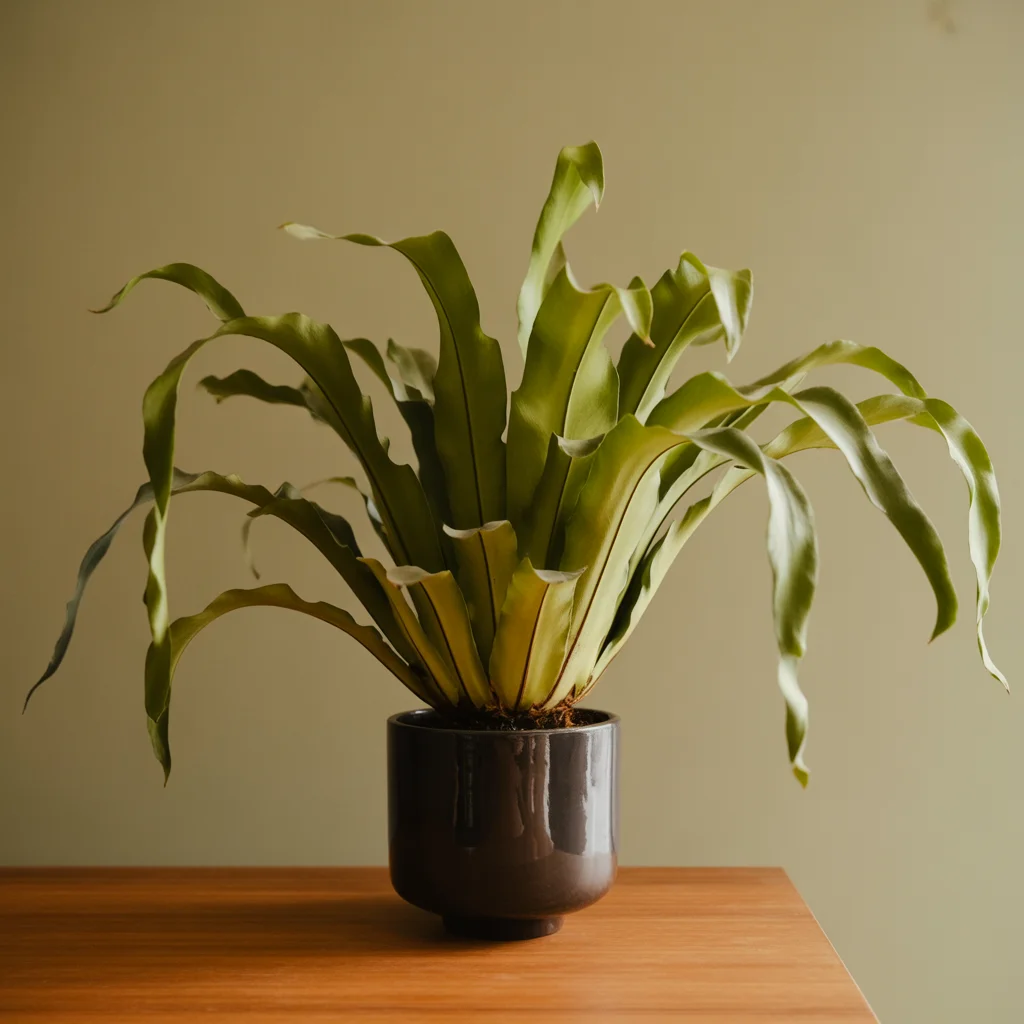
Common Problems with Bird’s Nest Fern
Here’s where things get dicey. Bird’s Nest Ferns like to keep you guessing, and the smallest thing can cause drama. Too much sun turns fronds pale or brown and crispy. Not enough water and you’ll spot droopy, sad-looking leaves—believe me, it happens to the best of us.
Watch for pests like mealybugs. I once saw cottony fluff on the leaves and panicked—good news is, a little rubbing alcohol on a Q-tip sorts it out quick. If you notice mushy centers or black spots, you might be drowning your plant. Root rot comes from soggy soil, not bad luck (though it sure feels unlucky). Lastly, don’t freak out over the odd yellow frond; they just quit leaves sometimes.
Should I cut the brown tips off my bird’s nest fern?
Absolutely, and let me tell you why—brown tips on a Bird’s Nest Fern are like split ends, pure and simple. They don’t magically heal up or go green again. Cut them off gently with clean scissors, but try not to snip into the healthy green. Aim just for the dead part. If you ignore them, no biggie, but the plant looks tired and less perky.
Leaving brown bits on can invite more problems. Plus, the whole vibe feels messy, and who needs that sort of energy? I did this once and the next week new shoots showed up—and I kid you not, I felt like some kinda plant wizard.
Where should I place a bird’s nest fern?
Location really does matter with Bird’s Nest Fern. That perfect spot has bright, indirect light—meaning, skip the sunny windowsill unless there’s sheer curtains or the light bounces off a wall first. North or east facing windows are lovely (in the northern hemisphere anyway). Bathrooms are sneaky winners too, since steam from the shower keeps things humid.
Avoid vents, drafts, and especially cold air. These ferns will sulk if you put them next to an A/C unit, trust me on that. I’d rather squeeze mine on a shelf in the kitchen than risk dry, breezy air. Play with the placement till you find what the plant loves—sometimes it really is trial and error.
How often does a bird’s nest fern need to be watered?
If I had a dollar for every time I wondered how much water to use, well, I’d at least buy another houseplant. Bird’s Nest Fern doesn’t like soggy feet, but hates drying out. Here’s my totally unpretentious watering routine:
- Stick your finger in the soil, if the top feels dry, time to water.
- Cut back in winter, since the plant grows slower.
- For extra humidity, mist around (not inside) the rosette.
- Never let excess water sit in the saucer.
Ignoring this led me to a sad, floppy fern. Once I figured out the “top-inch rule,” things turned around.
Let’s Get Your Fern Thriving
So, you made it through! Bird’s Nest Fern care is a little like learning to cook a favorite comfort food. Messy at first, sure, but oh so worth it. You’ve now got the scoop on types, pruning, common drama, and those awkward brown tips. If you’ve mastered Aloe Vera care or rocked Spider Plant care, this fern’s totally within reach. Ready to boost those green skills? Come swap tips, or just drool over pretty ferns, on Bird’s Nest Fern guidance : r/ferns. Go on, your living room deserves a little jungle magic—it’s easier than it looks, promise. 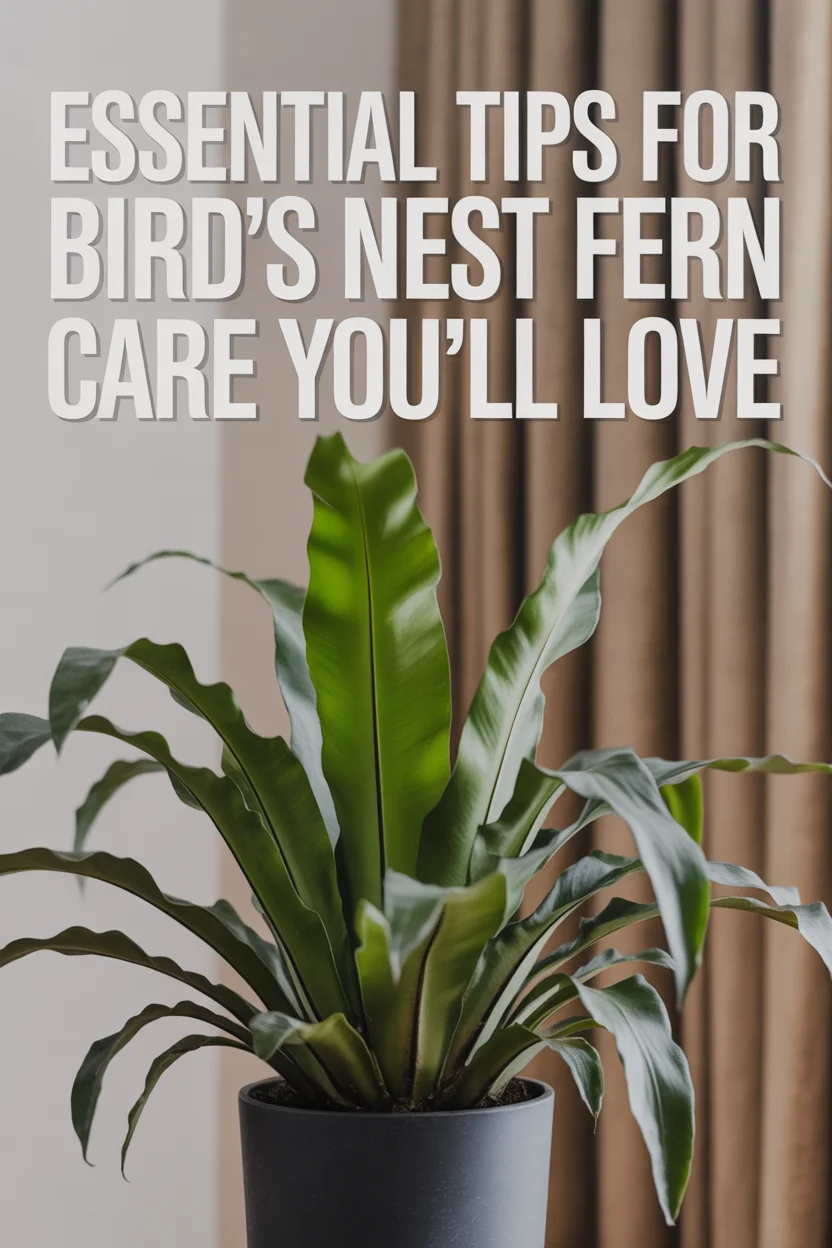
FAQ about Bird’s Nest Fern Care
How big can my Bird’s Nest Fern get?
With patience (and luck), they can get up to 2-3 feet wide! Indoors, though, expect them to stay a manageable size.
Help! My fern is getting yellow. What did I do?
Most likely, not enough water or too much sun. Adjust these and give it a week to bounce back.
Should I feed my Bird’s Nest Fern fertilizer?
Light feeding in spring and summer is fine. I use a diluted all-purpose houseplant fertilizer—not too much. Every month is plenty.
Why do the leaves look wavy or curly?
That’s normal! Some types just have curly leaves. If it’s sudden, might be reacting to dry air or inconsistent watering.
Are Bird’s Nest Ferns pet-friendly?
Yes, they’re non-toxic—your pets and kiddos are safe. Relief, right?
